Last updated on
Yes, a walk-in pantry can add value to your home as it offers additional valuable storage space and is a desirable feature for many potential buyers.
A walk-in pantry can indeed add value to a home. It’s a coveted feature that not only provides additional storage space but also contributes to the overall aesthetic appeal of your kitchen.
A well-designed walk-in pantry can enhance the functionality of your kitchen, making meal preparation and grocery storage more efficient.
This article will delve into the specifics of how a walk-in pantry adds value, including the aspects of convenience, organization, and the potential for increased resale value.
Stay tuned to learn more about the benefits of having a walk-in pantry and how you can maximize its value.
Key takeaways:
- A walk-in pantry adds value to a home.
- The average cost to add a pantry ranges from 0 to ,500.
- Considerations for adding a walk-in pantry include size, wall space, and door placement.
- Design principles for a walk-in pantry include zone planning and vertical storage.
- Functional features for a walk-in pantry include customized shelving and sliding doors.
The Average Cost to Add a Pantry Is $750 to $3,500
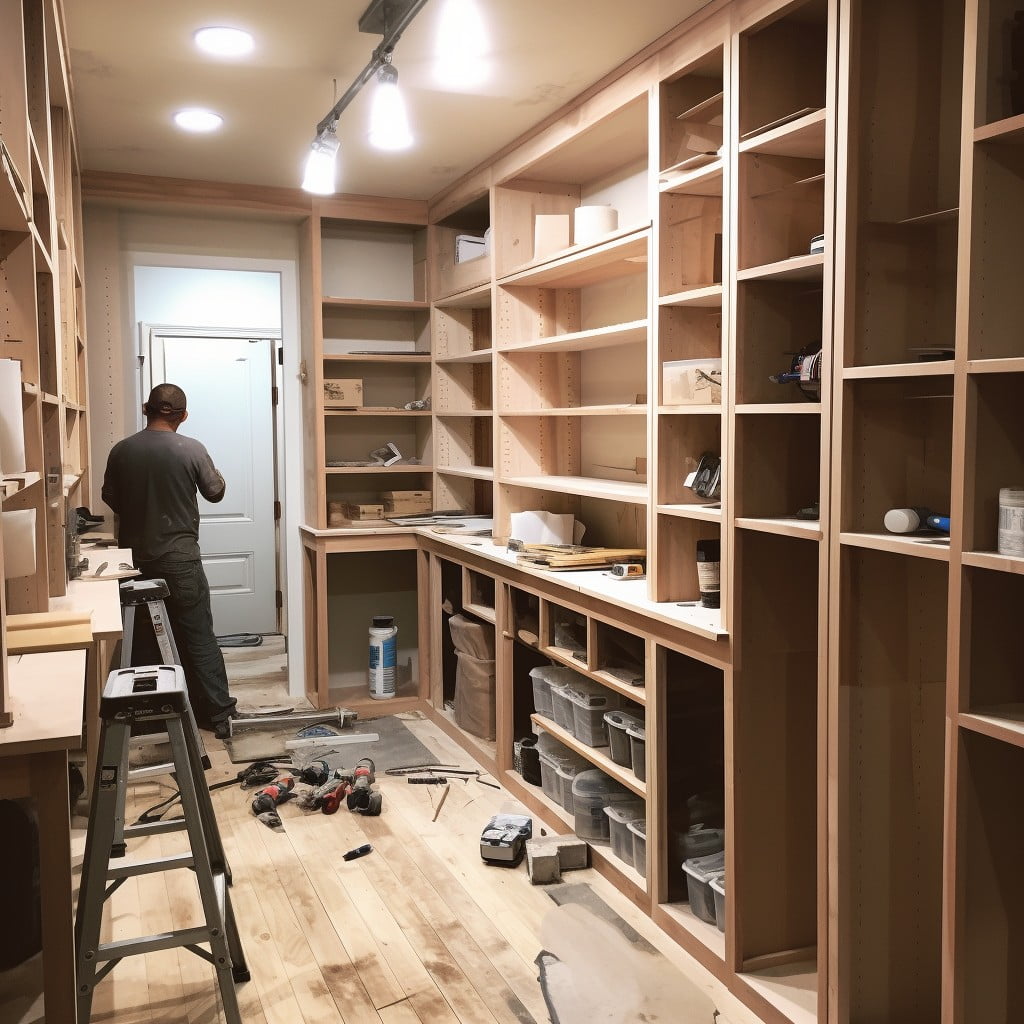
Diverse factors influence the cost of pantry additions. Material selection, size and design intricacy are central to determining the expense. Usually, budget pantries employ wire shelving and offer compact storage at a cost of around $750.
Customized options, offering higher-quality materials – hardwood or metal shelving, will present more elevated costs, averaging between $1,500 to $3,500.
Keep in mind labor costs, pantry location, and any requisite home adjustments can also influence the final price. For instance, if plumbing or electrical wiring alterations are needed, costs may increase significantly.
Additional Cost Factors for Walk-in Pantry
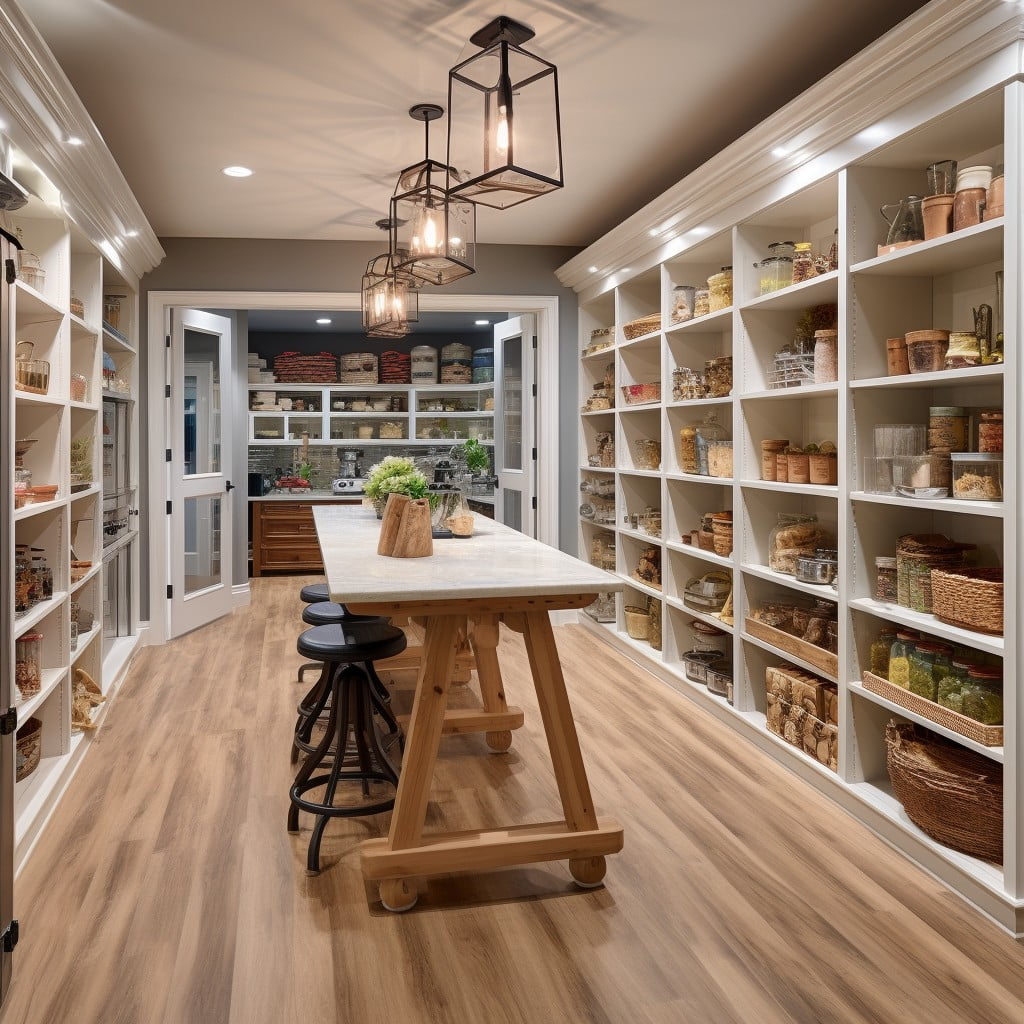
Several elements impact the overall expense of installing a walk-in pantry. Material choice significantly influences cost. While plywood or MDF may be cost-efficient, solid wood or custom cabinetry can increase expenses. Lighting features also contribute; simple overhead lighting remains affordable, however, specialized accent lighting adds cost. Similarly, Bin storage and shelving could be less expensive plastic or wire options, but can also be upgraded to wood or metal for an additional charge. Finally, installing doors, especially if desired as a unique or designer style, affects the final budget.
Size Considerations for Adding a Walk-in Pantry
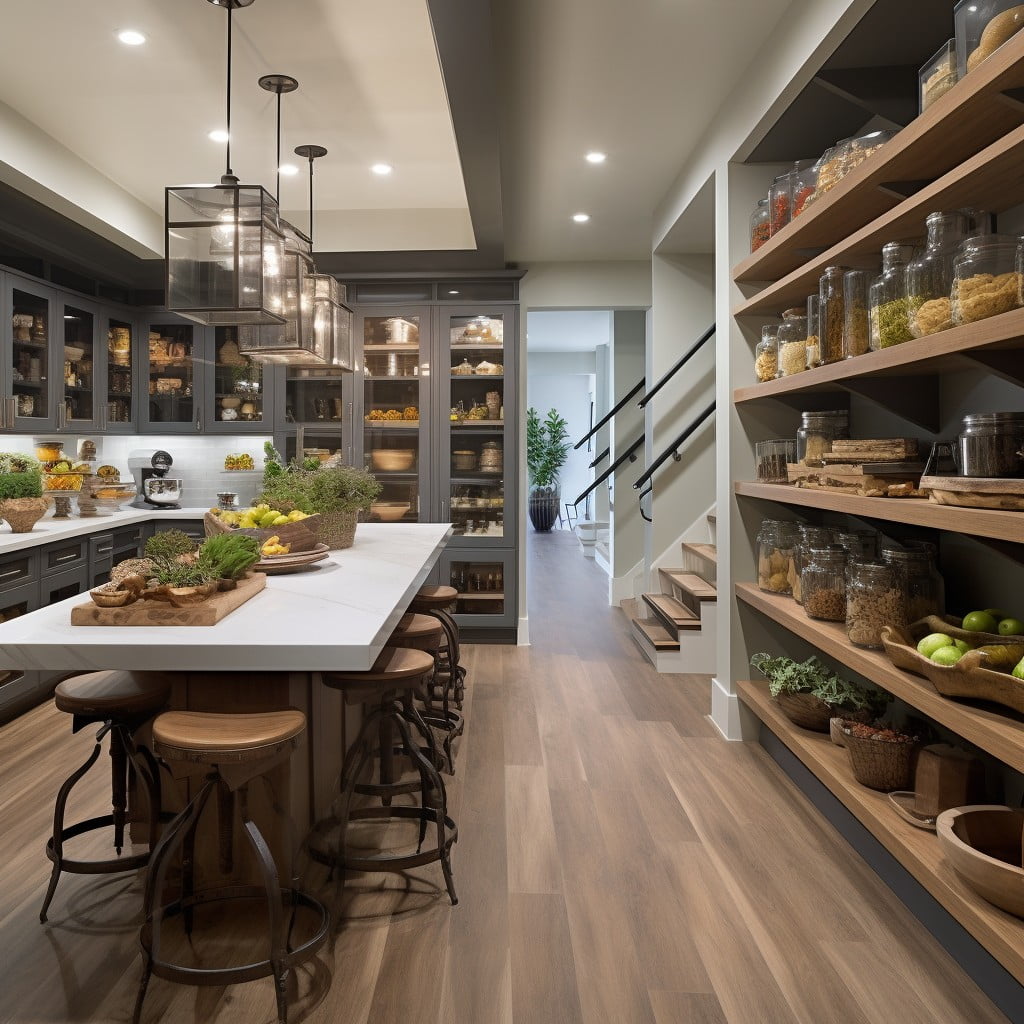
Considering the size of your kitchen and adjacent areas is crucial, as a walk-in pantry requires a certain amount of space for maximum functionality. Here are important factors to keep in mind:
1. Minimum Footprint: To work comfortably, you need at least a 7 feet by 7 feet area.
2. Wall Space: Ensure enough wall space for shelves, drawers, and pantry-floor items.
3. Door Placement: Plan your door carefully to avoid obstructing kitchen traffic.
4. Height: Consider the ceiling height. Higher spaces allow more storage but may require a step stool.
5. Proximity: Situating the pantry close to the kitchen aids in easy access to ingredients and kitchenware.
Designing for Maximum Organization in a Walk-in Pantry
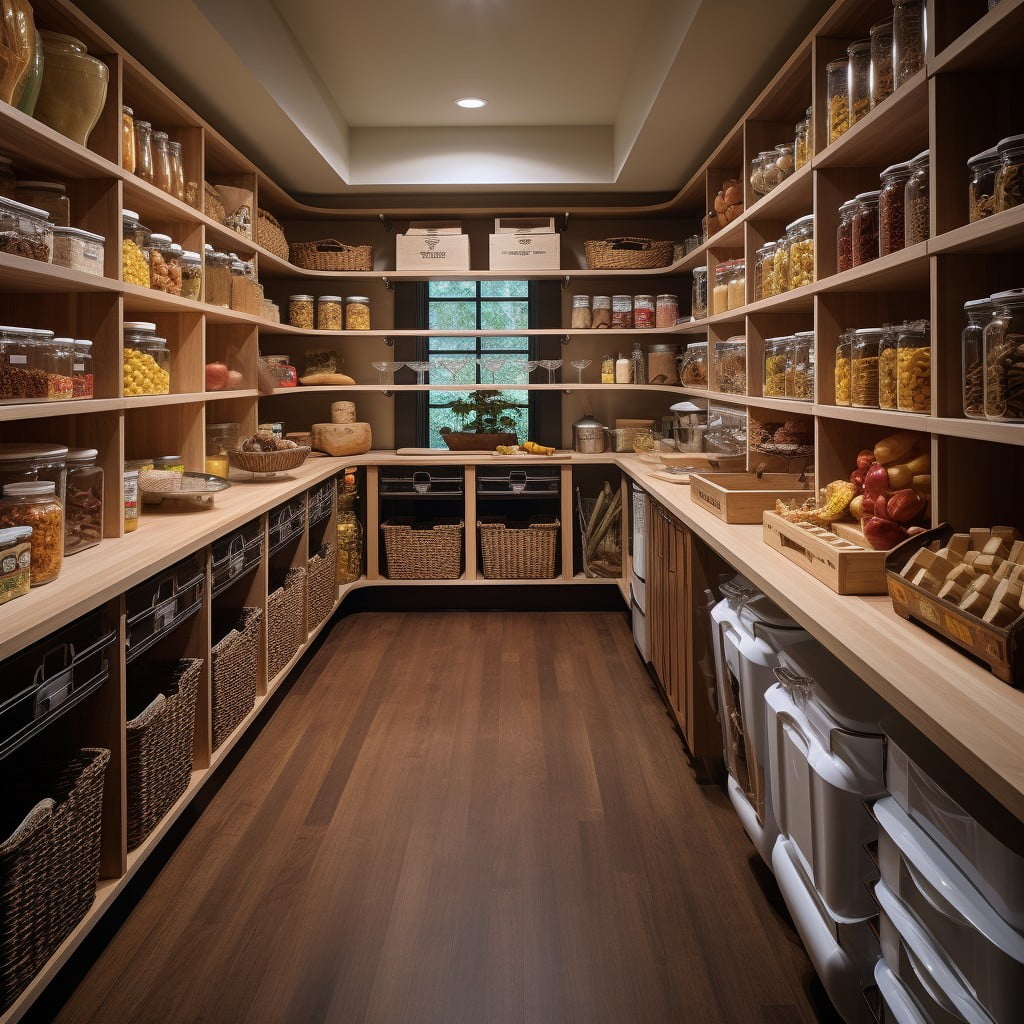
To maximize your pantry space, consider employing the following design principles:
1. Zone Planning: Similar items are grouped together to reduce clutter and easily locate things. Common zones include baking, cereals, canned goods, and snacks.
2. Vertical Storage: Utilize the height of your pantry by adding shelves or stackable containers. This gives you more space for larger items like baking pans or groceries.
3. Pull-out Shelves: These can be easier to access, and showcase your stored items better than fixed shelves.
4. Adjustable Shelves: These allow you to customize your pantry spaces to suit the varying sizes of items in your pantry.
5. Labeling: Labels help you remember where you place items and keep things organized. They can also be an aesthetic feature, adding personality to your pantry.
Remember, a well-organized pantry not only looks appealing, but also saves time and reduces stress when preparing meals. It can be the heart of an efficiently run kitchen.
Adding Functional Features to a Walk-in Pantry
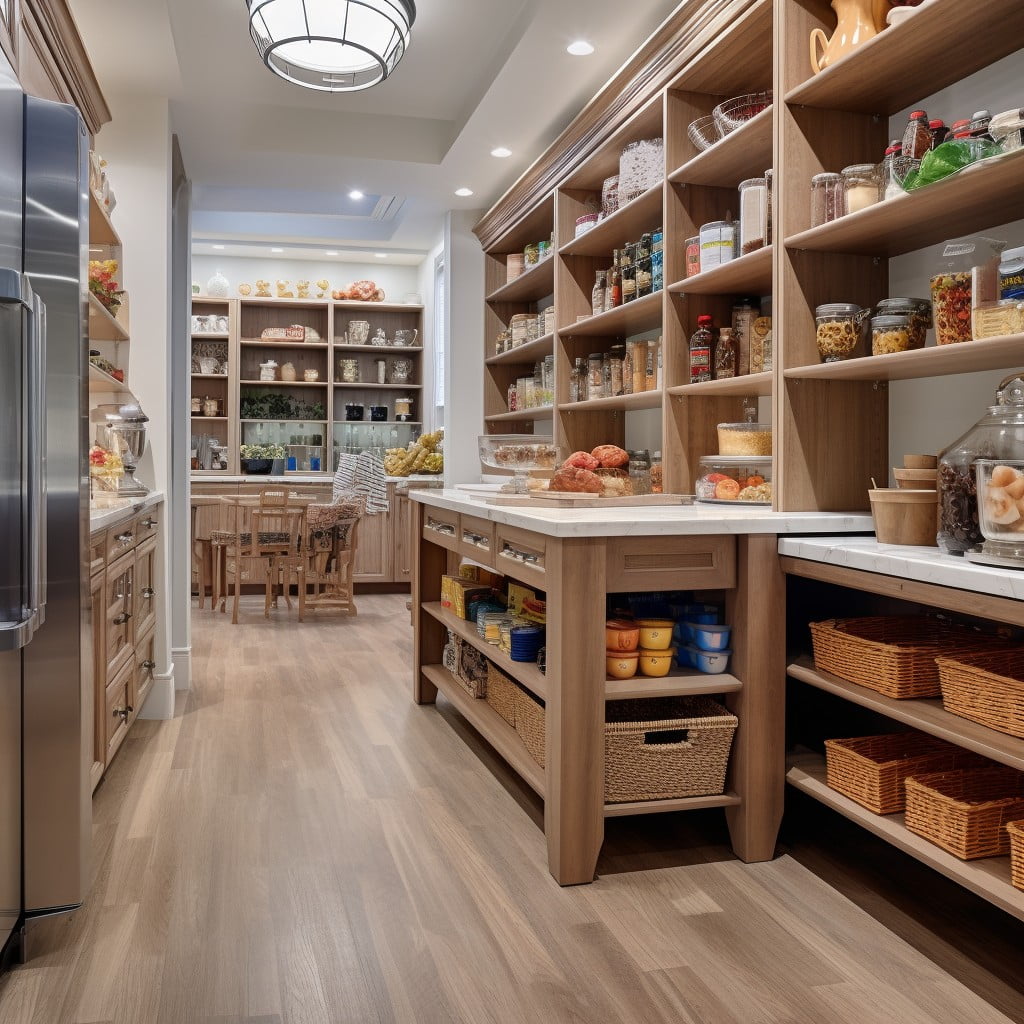
Incorporating functional features into a walk-in pantry significantly boosts both utility and value. Here are some elements to consider for maximum efficiency:
1. Customized Shelving: Tailor your shelf heights to match your most common pantry items.
2. Drawer Inserts and Bins: These help to sort and separate smaller items, making them easily accessible.
3. Light Fixture: A bright, preferably adjustable, light ensures visibility of all stored items.
4. Sliding Doors: Not only do they save space, but they also make access to your pantry easier.
5. Work Surface: A small countertop for food prep or an appliance station enhances the pantry’s functionality.
6. Climate Control: For a luxury touch, consider temperature-controlled zones for storing specific items like wine.
Does a Walk-in Pantry Add Value and Marketability
Walk-in pantries can significantly impact a home’s appeal and marketability. This is due to several critical factors:
1. Increased Storage Space: Homebuyers often prioritize ample storage, and walk-in pantries greatly expand kitchen capacity. They provide a designated place for appliances, canned goods, or even larger items.
2. Better Organization: Walk-in pantries help homeowners keep their kitchen spaces tidy. With proper shelving and bin systems, everything has a rightful place, enabling easy access and visibility.
3. Aesthetic Enhancements: Pantries can contribute to a home’s overall design. Modern pantries can integrate cabinetry, lighting, and color schemes that complement the kitchen’s aesthetics, thereby enhancing the visual appeal.
4. High-end Features: Walk-in pantries often feature high-end additions such as built-in wine racks or coffee stations. These features go far in swaying prospective buyers, positioning the home as luxury real estate.
Thus, the presence of a walk-in pantry can greatly enhance a home’s marketability, leading to higher appraisal values.
Comparison With Butler’s Pantry Value Addition
Butler’s pantries often situate between the kitchen and dining area, serving as a staging area for meal service. Walk-in pantries typically support broader storage needs.
Butler’s pantries offer a dedicated area for glassware, barware, serving dishes, and wine storage. Walk-in pantries aim at grocery, appliance, and bulk goods storage.
Value addition from butler’s pantries can lean more towards luxury appeal. On the other hand, walk-in pantries offer practical utility value.
The size of butler’s pantries often runs smaller than walk-in pantries, thus affecting the construction cost.
The “must-have” factor can sway differently in different buyer demographics. Young families might prioritize the versatile storage of walk-in pantries, while frequent entertainers may find more value in a butler’s pantry.
Both types can add value by enhancing kitchen functionality. However, the specific value and appeal will depend on potential buyers’ needs and lifestyle.
FAQ
How much value does a walk-in pantry add to a house?
A walk-in pantry can potentially add between 50% and 70% of the material cost value to a house.
Is it a good idea to have a walk-in pantry?
Yes, having a walk-in pantry is beneficial as it increases efficiency, allows for easier inventory, aids in meal preparation, and reduces food waste, potentially leading to financial savings.
What is the difference between a walk-in pantry and a pantry?
A walk-in pantry offers multiple walls of shelves for storage, while a pantry, often referred to as a cabinet pantry, consolidates your items into one confined space for convenience and ease of access.
What is a good size for a walk-in pantry?
A good size for a walk-in pantry is at least 4 feet wide and 4 feet long, but if more space is available, an 8 feet by 10 feet or 12 feet version would be ideal.
What are the cost implications of adding a walk-in pantry during renovation?
Adding a walk-in pantry during renovation can significantly increase the overall cost due to requirements for additional construction and materials, plus possible plumbing and electrical work.
How is the functionality of a home increased by having a walk-in pantry?
A walk-in pantry increases a home’s functionality by providing ample storage for food items, small kitchen appliances, and serving ware, thus reducing clutter and improving organization in the kitchen.
What additional features can be integrated into a walk-in pantry for added convenience?
Additional features that can be integrated into a walk-in pantry for added convenience include lazy susans, pull-out shelves, built-in spice racks, wine holders, overhead lighting, a second fridge or freezer, and an indented space for a step stool.
Recap:




